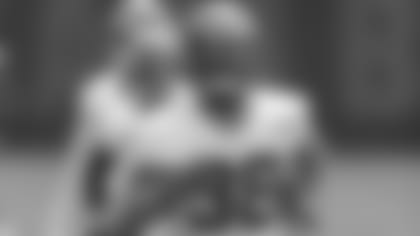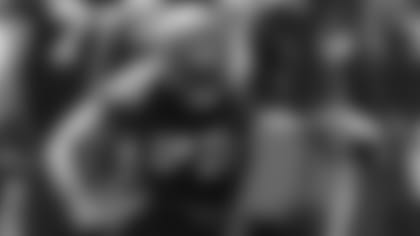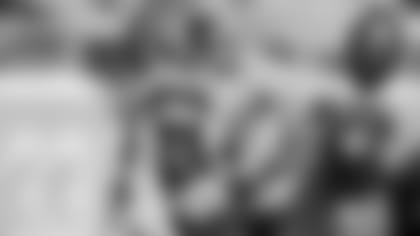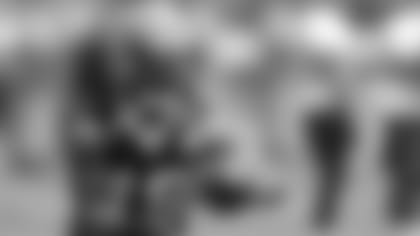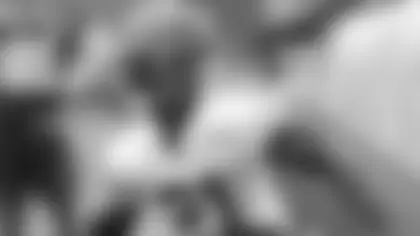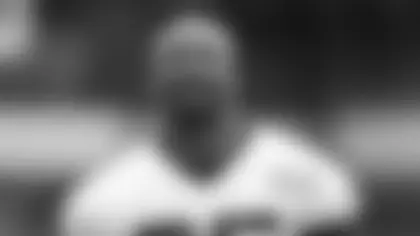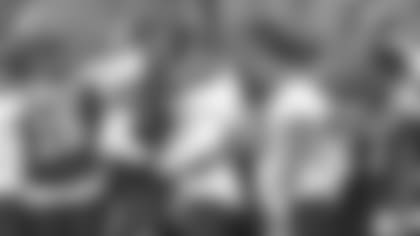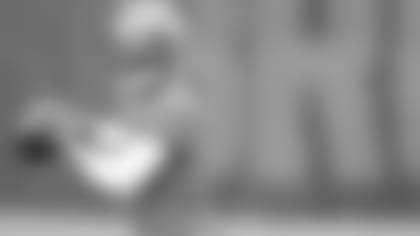BEAVERTON, Oregon -- Shortly after the Browns signed off on their refreshed logo and fonts, Browns executives visited Nike's innovation labs in April 2014. There, on Nike's sprawling campus just a few miles outside of Portland, they walked through secure doors that make it clear photography and use of social media are not permitted. Security personnel, three of whom are stationed at the front desk, flank visitors at all times and determine where they can be and what they're allowed to see.
The scientists, researchers, designers and many more types of professionals behind these doors are working with one thing in mind -- "Always listen to the voice of the athlete." Just as a reminder, that mantra hangs from the ceiling of the main entrance and stretches for multiple floors.
Before the aesthetics were finalized, performance was enhanced.
In June 2014, Nike made what would be its final presentation of uniforms to the Browns, who approved them and sent them on to testing. This stage of the process lasted three months, as the jerseys were figuratively and literally put through the ringer in a series of tests that diagnosed their wearability and durability while also analyzing not only how they appeared to the naked eye, but also on TV.
"Every little detail matters when it comes to both design and how a uniform performs on field," said Todd Van Horne, Nike's VP and Creative Director for Football.
It won't show up from 50 yards and won't be clear on TV, but a close look at the uniforms reveals contrasted stitching, a first in the NFL. This, Van Horne said, was done to emphasize the detail and construction quality seen throughout Cleveland and transplant it to the Nike Elite 51 Uniform, which features the latest advancements in jersey innovations.
In September 2014, the Browns approved the uniforms that would ultimately be used for 2015 and beyond.
Before they started sketching, Van Horne and his team wrote a story.
Part timeline, part motivational poster and part slideshow, the story kept the group true and grounded to what they remembered from their trips to Cleveland and what they discussed with the Browns. Any time artist's block cropped up, Craig Conahan, a Nike designer, simply looked at an old Browns picture from the 50s and 60s.
"The challenge of this beautiful uniform was really unique to me," Conahan said. "It wasn't just a total wipe-the-slate clean, do something new. You're starting with something iconic. Super challenging, super scary but really unique."
The Browns introduced what is considered to be their "classic" uniforms -- brown and white jerseys with distinct orange, brown and white striping (depending on the season) on the sleeves and pants -- in 1947, the second year of the franchise's existence. The iconic orange helmet was introduced three years later.
Outside of a few subtle changes here and there, the uniform remained relatively untouched, even when the franchise returned as an expansion team in 1999 after the team was moved to Baltimore in 1995.
Thus, the challenge.
"We believe in timeless design with everything we do," Van Horne said. "We want to still look good 30 years from now and we think we've got a good combination here that will look good 30 years from now. You look at the (old uniforms) and say they still hold up. We strive for that. We're not doing this just to get a reaction, we're doing these things for the power of Cleveland's story and the power of their history."
The power of Cleveland stands out as much as anything on all three of the Browns' uniforms. The phrase Nike's designers often repeated and referenced throughout the process, Van Horne said, was "Cleveland is a pillar of strength."
On the team's old uniforms, "Browns" is stitched in small print in between the neck and number. It's not visible from what Van Horne describes as the "50-yard read" and only truly comes into focus when the jersey is a few feet away.
The idea to stitch a big, bold "CLEVELAND" on the front of the jersey came along early in the process, Conahan said. The group toyed around with enlarging "Browns" or even placing "DAWG POUND" across the chest.
Ultimately, stretching the city's name in such a fashion that hasn't been done by any other NFL team "felt right," Browns president Alec Scheiner said.
"We talked a lot about how important Cleveland is for the Browns," Scheiner said. "When the team left, the city's heart was broken. It wasn't fair. The team never should have left here. I think it's a tribute to the city that we put it across the chest instead of the team name."
"Browns," of course, didn't go anywhere. Instead, it moved from the chest to the leg, as it stretches down each side in, again, a fashion that no other NFL team utilizes.
The iconic stripes on the sleeves have been modernized, emphasized and altered with proper consistency to create a seamless flow from the helmet to the sleeves to the pants. Unlike previous uniforms, the stripes on the sleeves now stretch to the front of the jersey and creep toward the numbers, which are updated in bold fashion with a drop shadow to add dimension and strength. The number fabric is made from Nike Chainmaile mesh, a fabric no other NFL team is currently using.
"We really just wanted that to be more visible and more upfront," Van Horne said. "Now you get a powerful rendition of that stripe in a new way by adding that element of bringing it around the corner. At the 50-yard read, you're like, 'whoa, look at the color, look at the font, look at the power of the stripe.'
"When all of these guys line up together with those stripes across their shoulders that unity is a really powerful, unique statement."
The updated orange hue that was unveiled when the Browns released their evolved logo in February carries forward to the uniforms and shines brightest on the team's "third" jersey. The addition of orange jerseys and pants to go along with the brown and white ones already in the Browns' closet gives the team a total of nine possible uniform combinations.
Van Horne called the shift in color "subtle but significant" and said it changes how all three of the uniform's colors appear because of the change in contrast.
And although it's a new, official part of the Browns' ensemble, the orange jersey has history that dates back to 1953, when the team wore orange jerseys in a home-opening rout of the Philadelphia Eagles. After wearing them for exhibition games in 1954 and 1955, the Browns waited 47 years before bringing them back for a 2002 game against the Houston Texans. All told, Cleveland has worn orange five times in regular season games.
"We knew that orange would be an exciting color," Scheiner said. "It hearkens back to some really cool moments in this organization."
The last thing players see when they stretch their jersey atop their shoulder pads is a nod to the fan base that inspires them. Stitched along the inside of the collar is "Dawg Pound," the passionate group of Browns fans that will celebrate its 30th anniversary in 2015 and has taken on a life of its own that stretches far beyond a single section of seats at FirstEnergy Stadium.
Conahan said there were mock-ups with "Dawg Pound" on all parts of the jersey, but it made the most sense and fit best around the neck as a reminder to the athletes as they put on the jersey each time.
"Those are kind of those neat storytelling mechanisms that we like to put in and especially this one is so rich with the history of the Dawg Pound and such a powerful iconic images that brings fear into the rest of the nation," Van Horne said.
"It's, 'Oh man, I got to come to Cleveland.'"




